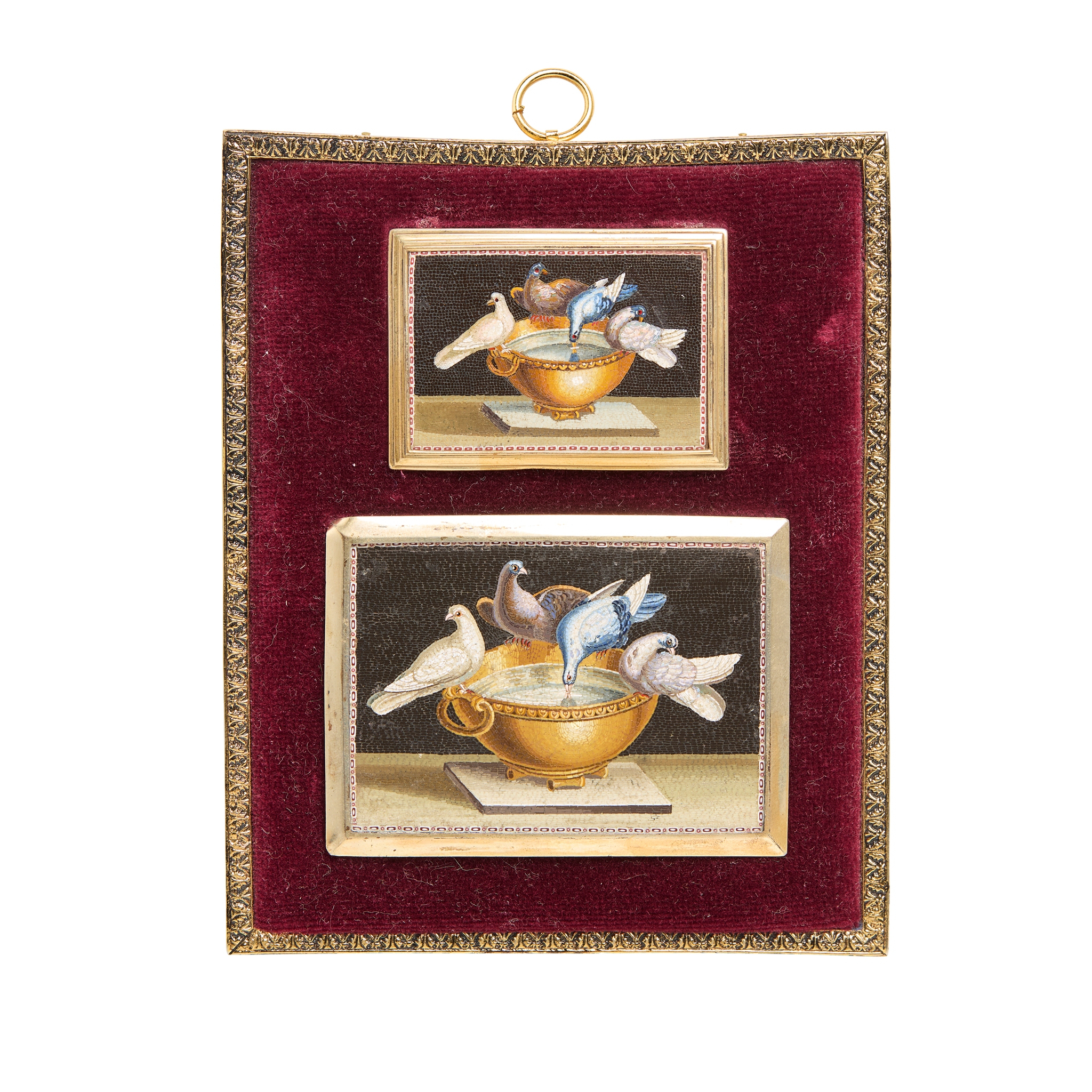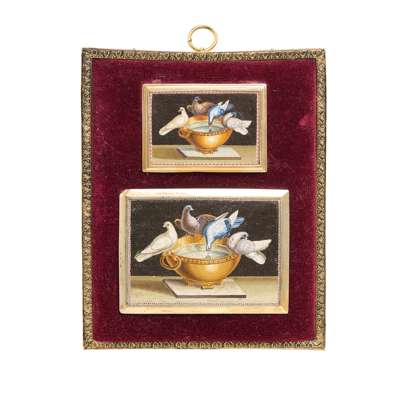
Lot 576

TWO ITALIAN MICROMOSAIC PANELS, ROME, ATTRIBUTED TO GIACOMO RAFFAELL
LATE 18TH CENTURY


Auction: Day Two | Thurs 4th Sept at 10am | Lots 403 to 727
Description
each depicting the Doves of Pliny, both panels backed in copper and mounted in white metal mounts, set together into a velvet covered frame
Dimensions
the larger panel 6.5cm x 4.7cm, the smaller panel 4.7cm x 3.2cm
Footnote
For an auction comparable, see Sotheby's, London, STONE II, 11 December 2020, lot 59, An Italian micromosaic panel, Rome, late 18th century, attributed to Giacomo Raffaelli, a slightly larger example of near identical design including the border to the edge, Sold for £7,560.
Giacomo Raffaelli came from a family that supplied the Vatican Mosaic Workshop with smalti, the material of which micromosaics are made. Giacomo was trained as a painter and sculptor from an early age and became a master in Florentine hardstone mosaics and Roman micromosaics. He often expressed his genius by combining both mosaic techniques in the same works of art. Most importantly, Raffaelli is credited with the invention of micromosaics. In 1775, at age twenty-two, he gave the first exhibition at his Rome studio of miniature mosaics, now known as micromosaics. This success led to a brilliant career in which he produced a vast number and variety of works, ranging from mosaic floors, tables, and monumental clocks to miniature mosaics small enough to fit on a snuffbox or brooch. He sometimes signed his work on the copper backs of his mosaics. One of his earliest known examples is a small round plaque, signed and dated 1779, depicting the Doves of Pliny (British Museum). However, numerous pieces attributed to Raffaelli, such as the eight miniature mosaics on an inkstand in the Wallace Collection, are unmarked.
Pliny's describes in his 'Natural History' (XXXVI, 25) a mosaic by Sosus with 'a dove, greatly admired, in the act of drinking, the shadow of its head reflected in the water, while other doves are sunning and grooming themselves on the edge of the bowl'. The original mosaic Pliny admired has never been discovered, although in 1737 Cardinal Guiseppe Furietti discovered a fragment of mosaic at the Villa Adriana in Tivoli matching that description. After Furietti's death, his heirs sold two centaurs and the mosaic for 14,000 scudi to the Museo Clementino. The composition was very popular as a micromosaic and many were brought back by Gentlemen on their Grand Tour.

